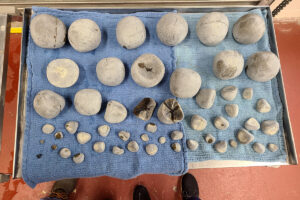SAA Detects Early Inflammation in Horses Traveling by Air

So Marc Oertly, DVM, of the Swiss Institute of Equine Medicine, in Berne, set out to determine whether serum amyloid A (SAA) concentrations could suggest inflammation sooner than a rectal thermometer in traveling horses. He presented his results at the 2017 American Association of Equine Practitioners Convention, held Nov. 17-21 in San Antonio, Texas.
Serum amyloid A is a protein present in undetectable to low levels in healthy horses. In response to inflammation, the liver releases SAA into the bloodstream, causing levels to rise 1,000-fold or more. Veterinarians can measure these levels to detect infection and monitor treatment response.
In a study funded by StableLab, a company that developed a stall-side blood test to measure SAA in horses, Oertly evaluated the optimum time point for measuring SAA after horses travel. He followed 121 high-level Warmblood show jumpers, ranging in age from 8 to 17, along three stops of the Longines Global Champions Tour
Create a free account with TheHorse.com to view this content.
TheHorse.com is home to thousands of free articles about horse health care. In order to access some of our exclusive free content, you must be signed into TheHorse.com.
Start your free account today!
Already have an account?
and continue reading.

Related Articles
Stay on top of the most recent Horse Health news with
















